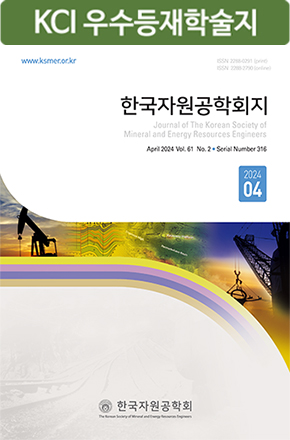Review
- Abacioglu, Y., Sebastian, H.M. and Oluwa, J.B., 2009, “Advancing Reservoir Simulation Capabilities for Tight Gas Reservoirs,” paper SPE 122793 presented at the 2009 SPE Rocky Mountain Petroleum Technology Conference, Denver, Colorado, USA, April 14-16.
- Addoun, M., Maraf, K., Tighe, M., Bramwell, J. and Snaas, A., 2011, “Initial Deployment of a New Design One-Trip Straddle System Resolves High Pressure Cross-Flow Problem in Water Injection Well in Algeria,” paper SPE 143336 presented at the SPE/ICoTA Coiled Tubing & Well Intervention Conference and Exhibition, Woodlands, Texas, USA, April 5-6.
- Agarwal, R.G., Carter, R.D. and Pollock, C.B., 1979, “Evaluation and Performance Prediction of Low-Permeability Gas Well Stimulated by Massive Hydraulic Fracturing,” Journal of Petroleum Technology, Vol. 31, No. 3, pp. 362-372.
- Aguilera, R., 1998, “Well Test Analysis of Multi-layered Naturally Fractured Reservoirs,” paper SPE 98-49 presented at the 49th Annual Technical Meeting of The Petroleum Society, Calgary, Alberta, Canada, June 8-10.
- Al-Ajmi, N.M., Kazemi, M. and Ozkan, E., 2003, “Estimation of Storativity Ratio in a Layered Reservoir with Crossflow,” paper SPE 84294 presented at the SPE Annual Technical Conference and Exhibition, Denver, Colorado, USA, October 5-8.
- Alghareeb, Z.M., Horne, R.N., Yuen, B.B. and Shenawi, H., 2009, “Proactive Optimization of Oil Recovery in Multilateral Wells Using Real Time Production Data,” paper SPE 124999 presented at the 2009 SPE Annual Technical Conference and Exhibition, New Orieans, Louisiana, USA, October 4-7.
- Bakulin, A. and Korneev, V., 2008, “Acoustic Signatures of Crossflow Behind Casing in Commingled Reservoir: A Case Study from Teapot Dome,” Geophysics, Vol. 73, No. 4, pp. E145-E152.
- Bennett, C.O., Camacho, R.G. and Reynolds, A.C., 1985, “Approximate Solutions for Fractured Wells Producing Layered Reservoirs,” SPE Journal, Vol. 25, No. 5, pp. 729-742.
- Bennett, C.O., Raghavan, R. and Reynolds, A.C., 1986, “Analysis of Finite-Conductivity Fractures Intercepting Multilayer Reservoirs,” SPE Formation Evaluation, Vol. 1, No. 1, pp. 259-274.
- Bourdet, D., 1985, “Pressure Behavior of Layered Reservoirs With Crossflow,” paper SPE 13628 presented at the 1985 Annual California Regional Meeting, Bakersfield, California, USA, March 27-29.
- Caillabet, Y., Fabrie, P., Lemonnier, P., Masson, R. and Ricois, O., 2001, “Representation of Crossflow Effects in Advanced Wells in a Multipurpose Reservoir Simulator,” paper SPE 66372 presented at the SPE Reservoir Simulation Symposium, Houston, Texas, USA, February 11-14.
- Camacho, R.G., Raghavan, R. and Reynolds, A.C., 1987, “Response of Wells Producing Layered Reservoirs: Unequal Fracture Length,” SPE Formation Evaluation, Vol. 2, No. 1, pp. 9-28.
- Chaudhry, A.U., 2004, Oil Well Testing Handbook, Elsevier, USA, pp. 504-512.
- Cinar, Y., Jessen, K., Berenblyum, R., Juanes, R. and Orr Jr, F.M., 2006, “An Experimental and Numerical Investigation of Crossflow Effects in Two-Phase Displacements,” paper SPE 90568 presented at the SPE Annual Technical Conference and Exhibition, Houston, Texas, USA, September 26-29.
- Dindoruk, B. and Firoozabadi, A., 1996, “Crossflow in Fractured/Layered Media Incorporating Gravity, Viscous, And Phase Behavior Effects,” paper SPE 35457 presented at the SPE/DOE 10th Symposium on Improved Oil Recovery, Tulsa, OK, USA, April 21-24.
- Economides, C.A. and Joseph, J., 1987, “A New Test for Determination of Individual Layer Properties in a Multilayered Reservoir,” SPE Formation Evaluation, Vol. 2, No. 3, pp. 261-283.
- Gao, C., 1984, “Single-Phase Fluid Flow in a Stratified Porous Medium With Crossflow,” SPE Journal, Vol. 24, No. 1, pp. 97-106.
- Gomes, E. and Ambastha, A.K., 1993, “An Analytical Pressure-Transient Model for Multilayered, Composite Reservoirs With Pseudosteady-State Formation Crossflow,” paper SPE 26049 presented at the SPE Western Regional Meeting, Anchorage, Alaska, USA, May 26-28.
- Guo, B., Gao, D. and Wang, Q., 2011, “The Role of Formation Damage in Hydraulic Fracturing Shale Gas Wells,” 2011, paper SPE 148778 presented at the SPE Eastern Regional Meeting, Columbus, Ohio, USA, August 17-19.
- Haq, S. and Reis, J.C., 1993, “Predicting Capillary Crossflow in Layered Reservoirs,” paper SPE 26651 presented at the 68th Annual Technical Conference and Exhibition, Huston, Texas, USA, October 3-6.
- Khattab, H.A., Yeh, N-S. and Agarwal, R.G., 1991, “Pressure Transient Behavior of Slanted Wells in Single- and Multiple-Layered Systems,” paper SPE 22730 presented at the 66th Annual Technical Conference and Exhibition of Society of Petroleum Engineers, Dallas, TX, USA, October 6-9.
- Kuchuk, F.J. and Habashy, T., 1996, “Pressure Behavior of Horizontal Wells in Multilayer Reservoirs with Crossflow,” SPE Formation Evaluation, Vol. 11, No. 1, pp. 55-64.
- Kuhl, E.J., 2003, Optimization of Recovery from Two-layer Reservoirs with Crossflow, MS Thesis, Pennsylvania State University, USA.
- Lee, Y.S., Kim, K.H., Kwon, S.I., Hwang, S.H., Seo, J.W., Lee, T.H., Seul, C.H. and Sung, W.M., 2009, “The Study on the Allocation of Production Rate in Commingled Reservoir,” J. of The Korean Society for Geosystem Engineering, Vol. 46, No. 4, pp. 482-489.
- Lefkovits, H.C., Hazebroek, P., Allen, E.E. and Matthews, C.S., 1961, “A study of the Behavior of Bounded Reservoir Composed of Stratified Layers,” SPE Journal, Vol. 1, No. 1, pp. 43-58.
- Lu, P., 1997, Horizontal and Slanted Wells in Layered Reservoirs with Crossflow, MS Thesis, Stanford University, USA.
- Nikjoo, E. and Hashemi, A., 2012, “Pressure Transient Analysis in Multiphase Multi Layer Reservoirs with Inter Layer Communication,” paper SPE 152838 presented at the EAGE Anuual Conference and Exhibition incorporating SPE Europec, Copenhagen, Denmark, June 4-7.
- Park, J.H., Son, D.G. and Sung, W.M., 2002, “Analysis of Characteristics of Flow Regime for Horizontal Well Testing Data in Multi-layer Reservoirs,” J. of the Korean Institute of Mineral and Energy Resources Engineers, Vol. 39, No. 3, pp. 165-172.
- Pederson, J.M., Moon, M.S. and Al-Ajeel, H.Y., 1998, “Data Validation: Key to Development of an Integrated Reservoir Model for the Wara Formation, Greater Burgan Field,” SPE Reservoir Evaluation & Engineering, Vol. 1, No. 4, pp. 338-347.
- Petricola, M.F.J. and Watfa, M., 1993, “Multiwell Application of Downhole Temperature Profiles for Crossflow Analysis,” paper SPE 25630 presented at the SPE Middle East Oil Technical Conference & Exhibition, Bahrain, April 3-6.
- Rotramel, J., 2011, “A Pilot Test of Continuous Bottom Hole Pressure Monitoring for Production Optimization of Coalbed Methane in the Raton Basin,” paper SPE 142318 presented at the SPE Production and Operations Symposium, Oklahoma city, Oklahoma, USA, March 27-29.
- Russell, D.G. and Prats, M., 1962, “The Practical Aspects of Interlayer Crossflow,” Journal of Petroleum Technology, Vol. 14, No. 6, pp. 589-594.
- Ryou, S., Frants Jr, J.H. and Lee, W.J., 1994, “New, Simplified Methods for Modelling Multilayer Rservoirs Performing at Pseudo-Steady State,” paper SPE 28631 presented at the SPE 69th Annual Technical Conference and Exhibition, New Orleans, LA, USA, September 25-28.
- Ryou, S.S., 2000, “Simplified Methods of Modeling Multilayer Reservoirs during Transient Flow,” J. of the Korean Institute of Mineral and Energy Resources Engineers, Vol. 37, No. 2, pp. 138-147.
- Scholz, J., Sorensen, F. and Hamp, T., 2008, “Evaluating Crossflow Migration Drainage,” paper SPE 114969 presented at the CIPC/SPE Gas Technology Symposium 2008 Joint Conference, Calgary, Alberta, Canada, June 16-19.
- Sharma, R., Nghiem, L.X., Siu, D.A., Collins, D.A. and Mourits, F.M., 1996, “Efficient Modelling Of Wellbore Backflow,” J. of Canadian Petroleum Technology, Vol. 35, No. 6, pp. 34-41.
- Sommerauer, G. and Zerbst, C., 2006, “Rapid Pressure Support for Champion SE Reservoirs by Multi-Layer Fractured Water Injection,” paper SPE 101017 presented at the 2006 Asia Pacific Oil & Gas Conference and Exhibition, Adelaide, Australia, September 11-13.
- Son, D.G., 2001, Study for Pressure Behavior of Horizontal Well in Multilayer Reservoirs with Crossflow, MS Thesis, Hanyang University, Seoul, Korea.
- Song, J.H., 2012, Production Performance Prediction of a Commingled Well from a Multi-layered Tight Gas Reservoir Using a New Decline Curve Analysis, MS Thesis, Seoul National University, Seoul, Korea.
- Spivey, J.P., 2006, “Estimating Layer Properties for Wells in Multilayer Low-Permeability Gas Reservoir by Automatic History-Matching Production and Production Log Data,” paper SPE 100509 presented at the 2006 SPE Gas Technology Symposium, Calgary, Alberta, Canada, May 15-17.
- Sun, H., Gao, C., Qian, H. and Zhou, F., 2002, “Gas Flow in a Stratified Porous Medium with Crossflow,” J. of Thermal Science, Vol. 11, No. 1, pp. 35-40.
- Sun, H., Liu, L., Zhou, F. and Gao, C., 2003, “Exact Solution of Two Layer Reservoir with Crossflow under,” paper SPE 81043 presented at the SPE Latin America and Caribbean Petroleum Engineering Conference, Port-of-Spain, Trinidad, West Indies, April 27-30.
- Sung, W.M., Park, J.H. and Son, D.G., 2002, The Study of Horizontal Well Test Analysis In Multi-layered Gas Reservoir, Ministry of Commerce, Industry & Energy, Gwacheon, Gyeonggi, Korea.
- Sydansk, R.D. and Romero-Zeron, L., 2011, Reservoir Conformance Improvement, Society of Petroleum Engineers, USA, pp. 21-40.
- Wong, F.Y. and Fong, D.K., 1997, “Developing a Field Strategy to Eliminate Crossflow Along a Horizontal Well,” The Journal of Canadian Petroleum Technology, Vol. 36, No. 9, pp. 26-35.
- Yudin, E. and Lubnin, A., 2011, “Simulation of Multilayer Wells Operating,” paper SPE 149924 presented at the SPE Arctic and Extream Environment Conference & Exhibition, Moscow, Russia, October 18-20.
- Zhu, D., Hill, D. and Landrum, W.R., 2002, “Evaluation of Crossflow Effects in Multilateral Wells,” paper SPE 75250 presented at the SPE/DOE Improved Oil Recovery Symposium, Tulsa, Oklahoma, USA, April 13-17.
- Publisher :The Korean Society of Mineral and Energy Resources Engineers
- Publisher(Ko) :한국자원공학회
- Journal Title :Journal of the Korean Society of Mineral and Energy Resources Engineers
- Journal Title(Ko) :한국자원공학회지
- Volume : 50
- No :2
- Pages :306-317
- DOI :https://doi.org/10.12972/ksmer.2013.50.2.306



 Journal of the Korean Society of Mineral and Energy Resources Engineers
Journal of the Korean Society of Mineral and Energy Resources Engineers








